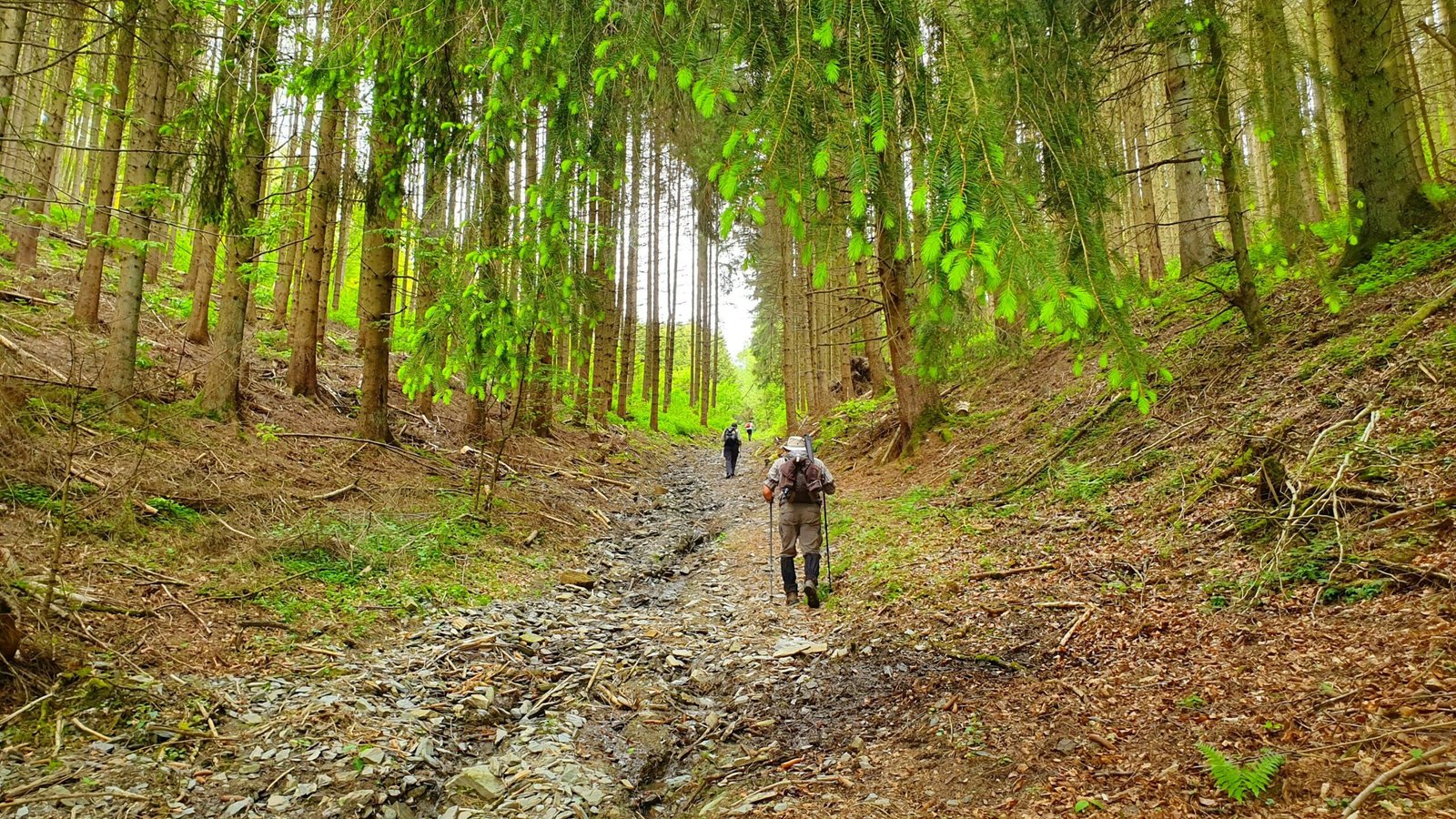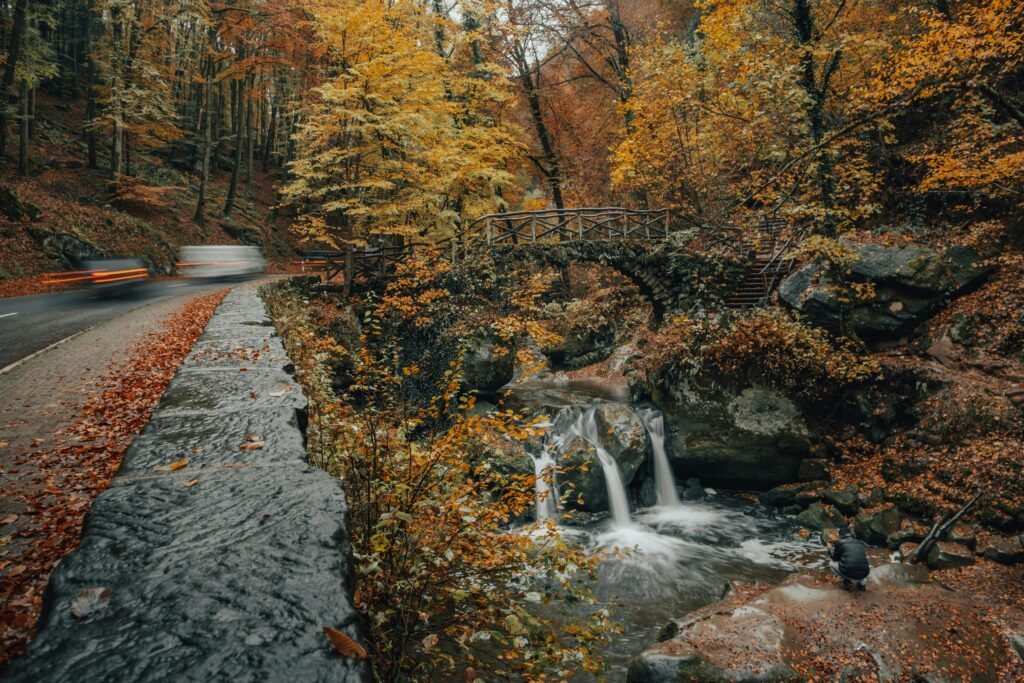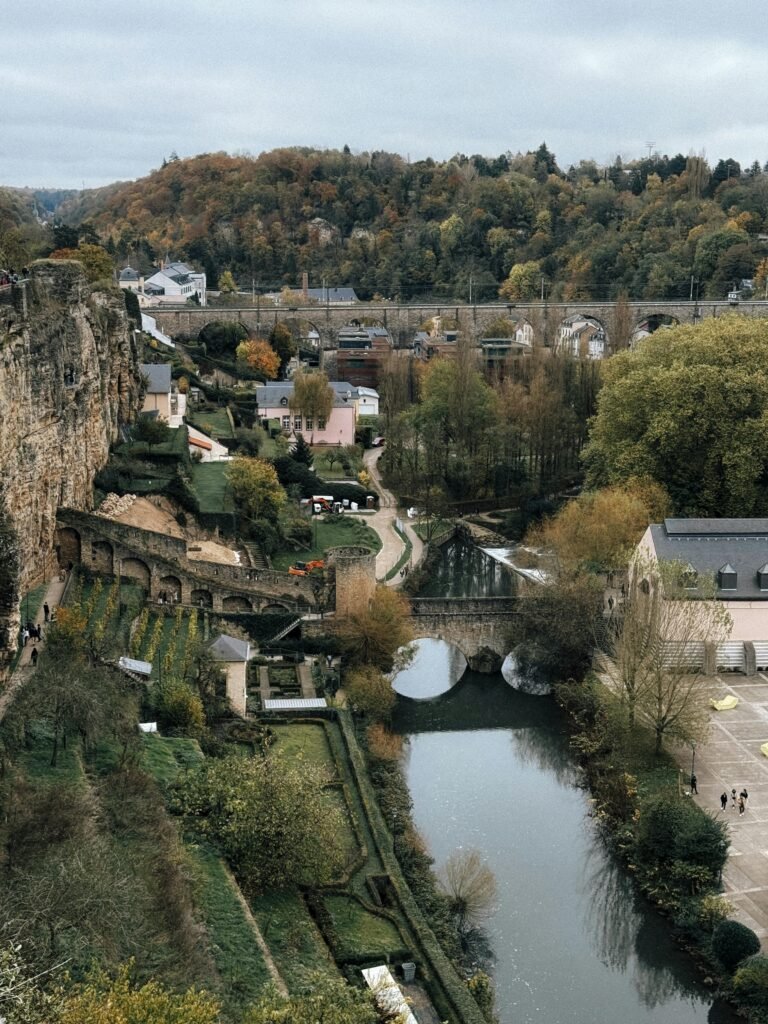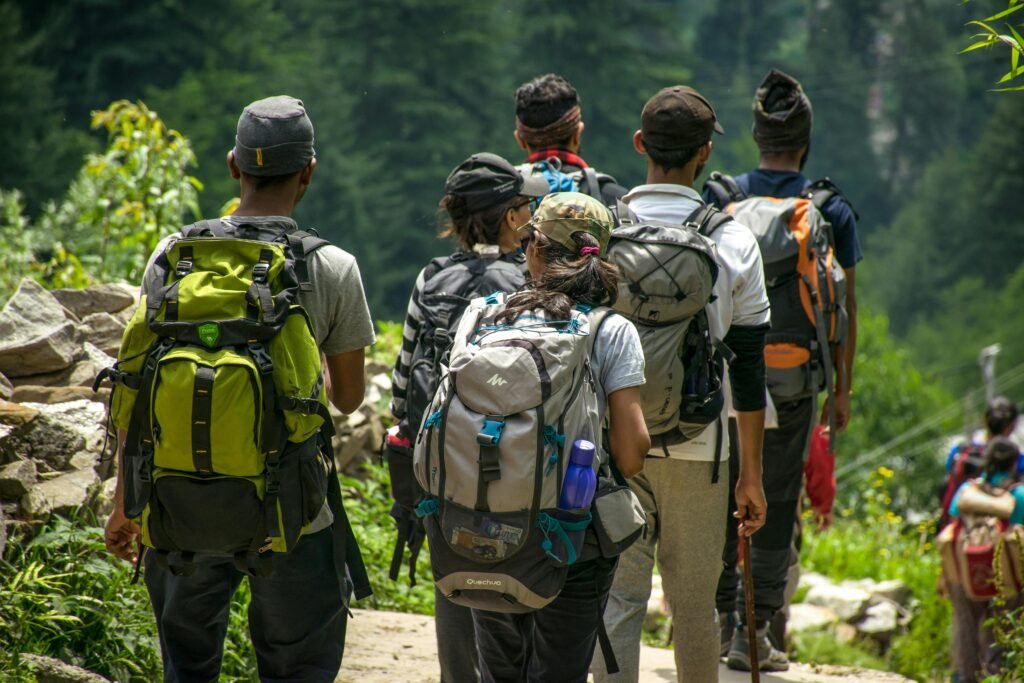Introduction to the Mullerthal Region
The Mullerthal Region, popularly known as ‘Little Switzerland’, is a stunning destination located in the eastern part of Luxembourg. Renowned for its picturesque landscapes, this area is characterized by its unique geological features such as sandstone rock formations, dense forests, and winding streams. The region stretches approximately 40 kilometers and is part of the larger Éislek natural park, offering a wealth of natural beauty that attracts visitors from near and far.

One of the most striking aspects of the Mullerthal Region is its hiking trails, which appeal to outdoor enthusiasts of all skill levels. The Mullerthal Trail, a renowned long-distance path, spans over 112 kilometers and is divided into three distinctive stages, allowing hikers to experience the enchanting scenery at a leisurely pace. Alongside the main trail, a variety of shorter routes are available, making the region accessible to families and those looking for a casual stroll. Each pathway is lined with vibrant flora and picturesque views, ensuring an engaging experience for all walkers.
In addition to its natural allure, the Mullerthal Region is steeped in cultural history. Quaint villages dotted throughout the landscape reflect the region’s heritage, and visitors will find charming local restaurants serving traditional Luxembourgish cuisine. As a result, the region not only fascinates with its natural wonders but also provides visitors with a glimpse into the local culture and traditions.
The Mullerthal Region’s diverse environment and extensive hiking opportunities make it a must-visit location for nature lovers. With its captivating beauty and rich history, it serves as a serene retreat that invites exploration and appreciation of the great outdoors.
Getting to Mullerthal: Travel Tips
The Mullerthal Region, often referred to as the Little Switzerland of Europe, is accessible through various transportation options, making it an appealing destination for travelers. For those considering driving, the most efficient route is via the A1 highway, leading from the capital city, Luxembourg City, to the region. The drive typically takes about 30 minutes, and ample parking is available in the nearby towns of Echternach and Beaufort, serving as excellent starting points for exploring the natural landscapes.
Products not fetched from DB and/or API. Please check debug logs.If traveling by public transport, the Luxembourg public transportation system provides reliable services. Travelers can take a train to Larochette or Echternach, followed by a bus operated by the RGTR network directly to various points within the Mullerthal Region. Bus schedules are frequent, but it is advisable to check the latest timetables for seasonal changes or updates. Also, purchasing a “Luxembourg Card” grants unlimited travel on public transportation, which can be cost-effective for visitors planning to explore the area extensively.
For those who prefer biking, the Mullerthal Region is well known for its scenic cycling paths. Renting a bike is feasible in local towns, and several dedicated bike trails lead through picturesque landscapes and charming villages. Biking not only allows for a more intimate experience of the region but also contributes to a sustainable travel approach.
When planning a stay in the Mullerthal Region, many accommodations, such as guesthouses and hotels, are available in nearby towns. It is wise to book in advance, especially during the tourist season. Local amenities, including restaurants and shops, are typically found in Echternach and Beaufort, ensuring that visitors can easily find everything they need to make their trip enjoyable. With thoughtful preparation, travelers can look forward to an enriching and memorable experience in this captivating part of Luxembourg.
Best Hiking Trails in Mullerthal
The Mullerthal Region, often referred to as the Little Switzerland of Europe, offers a variety of captivating hiking trails suited for all skill levels. One of the most renowned paths is the Mullerthal Trail itself, which spans approximately 112 kilometers and is divided into three distinct segments. Each section presents unique challenges and breathtaking landscapes, making it a favored choice among both locals and tourists alike. The trail showcases stunning rock formations, lush forests, and impressive waterfalls that enhance the hiking experience.

For those seeking a shorter adventure, the trail’s first section, known as “Mullertal Trail Section 1,” is ideal. It covers around 37 kilometers with a moderate difficulty level, offering hikers scenic overlooks such as the famous “Schwarze ern” rock formation. The path leads through charming villages and past enchanting woodlands, allowing hikers to immerse themselves in the region’s natural beauty. Along the way, visitors may also discover the historical ruins of the Beaufort Castle, adding a cultural dimension to their hike.
Another popular route to consider is the “Werschrummsch” trail, measuring close to 8 kilometers in length. This trail features a manageable difficulty level and takes hikers to some of the region’s lesser-known but equally magnificent spots. The trail includes picturesque views of the impressive Mullerthal rock formations, making it suitable for families and casual walkers.
For experienced hikers, the “Trail of the 5 Lakes” offers a more challenging endeavor, with a length of approximately 15 kilometers. This route not only provides stunning lake views but also demands greater physical effort, rewarding trekkers with panoramic vistas of the surrounding landscapes. Each of these trails presents diverse elements of the Mullerthal Region, ranging from geological wonders to historical landmarks, ensuring that every hike contributes to a rich outdoor experience.
Sandstone Rock Formations: Nature’s Artwork
The Mullerthal Region, often referred to as “Little Switzerland,” showcases a captivating array of sandstone rock formations that serve as remarkable natural artworks sculpted by the forces of nature over millennia. These formations, primarily composed of quartzite and sandstone, exhibit intricate shapes and patterns formed through processes of erosion, weathering, and the relentless power of water. The geological history of this region dates back approximately 300 million years, surfacing as stunning displays of nature’s artistry that are both visually striking and scientifically significant.
One of the most notable formations is the Hohllay, which features breathtaking rock arches and caves that offer a glimpse into the region’s geological past. Hiking through this area presents an opportunity not only to observe these extraordinary structures up close but also to understand their formation and development over time. Another prominent feature is the Schiessentumpel waterfall, where hikers can witness the confluence of water cascading over sandstone cliffs, further accentuating the enchanting beauty of the landscape.
The hiking trails in the Mullerthal Region are often designed to navigate through these magnificent formations, providing adventurers with immersive experiences. Each path reveals new angles and perspectives, allowing hikers to appreciate the towering cliffs and unique rock shapes that frame the scenery. Additionally, the interplay of light through the trees, reflecting off the rocky surfaces, enhances the overall aesthetic, making each hike an unforgettable experience.
These sandstone rock formations within the Mullerthal Region are not only vital to the environment but also hold cultural and historical significance. They captivate geologists, nature enthusiasts, and casual hikers alike, drawing people in to explore and appreciate the intricate beauty that has been molded through eons of natural processes. The melding of recreational activity with geological exploration makes a visit to this region a truly enriching experience.

Lush Forests and Biodiversity
The Mullerthal Region, often referred to as the Little Switzerland of Europe, is renowned for its extensive forests that are rich in biodiversity. These lush woodlands are home to a variety of plant and animal species, creating a complex web of life that contributes significantly to the ecological balance of the area. The forests serve as crucial habitats where wildlife flourishes, with species such as deer, foxes, and numerous bird varieties thriving amidst the diverse flora. This region’s unique geological formations and climatic conditions create microhabitats that support both common and rare species, making it a vital area for conservation efforts.
Biodiversity within Mullerthal’s forests plays an essential role in sustaining the ecosystem services that humans rely on. These services include air and water purification, pollination of plants, and soil fertility maintenance. By preserving the rich diversity of species in these forests, visitors can ensure that the natural balance is maintained, fostering a healthy environment for future generations. The region’s forests also play a pivotal role in carbon sequestration, mitigating climate change impacts. Thus, understanding and appreciating the diversity found in Mullerthal’s ecosystems is critical for their protection and management.
For those exploring the breathtaking hiking trails of this stunning region, there are several tips to ensure that the natural habitats are respected and preserved. Hikers are encouraged to stay on designated paths to minimize disturbances to wildlife and plant life. Observing animals from a distance, not feeding them, and using binoculars for a closer view can enhance the experience while safeguarding their natural behaviors. Additionally, it is wise to carry out any trash and follow Leave No Trace principles to help maintain the pristine conditions of the Mullerthal forests. Taking these steps will help visitors connect with nature while promoting the conservation of this unique and biodiverse area.
Cultural Landmarks and Historical Sites
The Mullerthal Region, often referred to as the Little Switzerland of Europe due to its picturesque landscapes, is also rich in cultural landmarks and historical sites that enhance the hiking experience. As adventurers traverse the trails, they are met with numerous attractions that reveal the region’s storied past, thereby making any excursion more meaningful.
One of the prominent landmarks is the Beaufort Castle, which dates back to the 11th century. This historical site features both a medieval castle and a Renaissance palace, providing visitors with insights into changing architectural styles over the centuries. The site is not only a picturesque spot but also offers guided tours that delve into its historical significance and the various noble families that resided there. This impressive edifice stands as a testament to the region’s turbulent history, having undergone various renovations and restorations throughout the years.
Additionally, the quaint village of Echternach is home to the Abbey of Echternach, a Benedictine monastery dating back to 698 AD. This abbey is renowned for its stunning baroque architecture and rich history. The site often hosts cultural events and performances, making it a vibrant hub for both locals and visitors. The adjacent town offers charming streets and picturesque views, ideal for leisurely exploration after a day of hiking.
Other notable sites include the old mills scattered throughout the region, particularly the Mullerthal Watermill. These mills not only signify the region’s agricultural heritage but also serve as reminders of traditional craftsmanship. They often feature workshops and exhibitions that demonstrate the historical techniques used in milling grains, thus enriching the visitor experience.
Incorporating these cultural landmarks into hiking itineraries allows visitors to appreciate the rich history and cultural heritage embedded in the Mullerthal Region. Each site offers a unique narrative that complements the natural beauty of this stunning area, making for a holistic travel experience.
Safety Tips and Precautions for Hikers
Hiking in the picturesque Mullerthal Region, often referred to as the Little Switzerland of Europe, requires adequate preparation and awareness of safety precautions. The natural beauty of this area is complemented by the intricacies of its terrain, which can pose challenges to even experienced hikers. To fully enjoy this stunning region while ensuring personal safety, consider the following essential tips.

Firstly, staying informed about the weather conditions is crucial before embarking on your hike. The Mullerthal Region can experience rapid weather changes, and it is advisable to check forecasts and be prepared for sudden rain, wind, or temperature drops. Dressing in layers can help adjust to these changes, alongside waterproof gear that will keep hikers dry in unexpected rain.
Proper footwear is also an important aspect of hiking safety. Sturdy, well-fitted hiking boots can provide the necessary support and traction on uneven and rocky trails. Additionally, carrying a well-stocked backpack is vital. It should include sufficient water to stay hydrated, snacks for energy, a first aid kit, and a map or GPS device to aid navigation.
While exploring the trails, hikers should make use of marked paths and avoid venturing off-course. The trails in the Mullerthal are generally well-signposted, but it is prudent to familiarize oneself with the routes beforehand. Always let someone know your planned route and expected return time, providing an additional layer of safety.
Lastly, being aware of potential wildlife encounters is essential. Although encounters are rare, it’s best to be educated about local wildlife and to maintain a respectful distance if any animals are spotted. As a final reminder, staying vigilant, prepared, and aware of your surroundings can greatly enhance your hiking experience in the enchanting Mullerthal Region.
Local Cuisine: What to Eat in Mullerthal
The Mullerthal Region, often referred to as the “Little Switzerland of Europe,” offers visitors not only picturesque landscapes but also a rich culinary experience. Traditional Luxembourgish cuisine is heavily influenced by its neighboring countries, particularly France, Germany, and Belgium. Hikers embarking on the scenic trails of Mullerthal will find a variety of local dishes that reflect the region’s heritage and charm.
One must-try dish is “Judd mat Gaardebounen,” which consists of smoked collar of pork served with broad beans and potato puree. This hearty meal is perfect for recharging after a long day of hiking. Equally delicious is “Gromperekichelcher,” a crispy potato cake seasoned with onions, parsley, and spices, which can be found at local markets and food stalls along the trails. Visitors should also indulge in “Kuddelfleck,” a traditional Luxembourgish tripe dish that is slowly cooked with onions and garnished with a rich gravy.
For those with a sweet tooth, “Bouneschlupp,” a bean soup that can be enjoyed sweetened with sugar or honey, may be a delightful option. Additionally, indulge in the classic “Tarte aux Mirabelles,” a delicious plum tart that is particularly popular during the summer months.
To experience authentic Müllerthal cuisine, numerous restaurants such as “Restaurant Roudi” and “Müllerthal Stuv” are recommended for their focus on local ingredients and traditional recipes. Cafés along the hiking routes also offer classic Luxembourgish pastries and beverages. These establishments not only provide comfort food but also enhance the overall hiking experience in this beautiful region, allowing visitors to really connect with the local culture through its gastronomy.
Conclusion: Why Mullerthal Should Be on Your Bucket List
The Mullerthal Region, often referred to as the Little Switzerland of Europe, is an exceptional destination that offers a unique blend of natural beauty, rich culture, and diverse hiking experiences. For hiking enthusiasts and nature lovers alike, the region is not merely a scenic getaway; it is an adventure waiting to be explored. The striking rock formations, lush forests, and picturesque landscapes make it an ideal place for those seeking tranquility and exploration.
One of the most compelling reasons to visit Mullerthal is the variety of trails available to hikers of all skill levels. From leisurely walks suitable for families to more challenging hikes that lead through stunning natural features, Mullerthal presents countless opportunities to immerse oneself in the great outdoors. Each trail unveils a new facet of the landscape, whether it’s the enchanting woodlands or the dramatic cliffs that characterize the region.
Beyond the splendid natural environment, Mullerthal boasts a rich cultural tapestry, evident in its charming villages and local traditions. Visitors can experience the warm hospitality of the locals and savor regional specialties, adding a cultural dimension to their outdoor adventures. This unique combination of hiking and cultural experiences ensures that every visit to Mullerthal leaves a lasting impression.
In essence, Mullerthal is not just a destination; it’s an experience enveloped in breathtaking scenery and engaging culture. For anyone considering their next travel plans, the Mullerthal Region should undoubtedly be on that bucket list. Whether you are seeking an exciting hiking experience or a serene escape into nature, Mullerthal promises memories that will last a lifetime.
